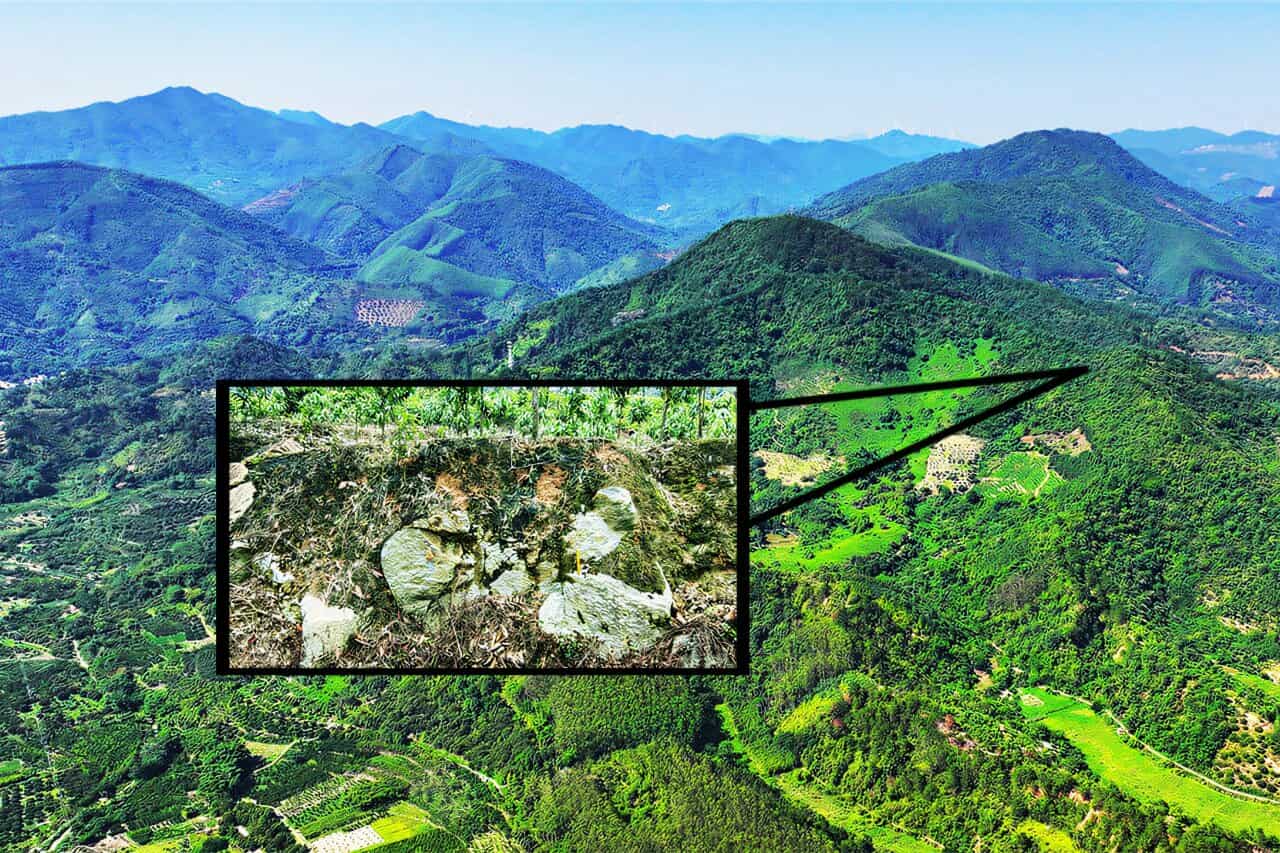Science
Massive 900-Metre Crater Discovered in China’s Guangdong Province

A newly discovered impact crater in China’s Guangdong Province, known as the Jinlin crater, has emerged as a significant find for researchers, challenging existing notions about recent extraterrestrial impacts on Earth. Measuring between 820 and 900 metres in diameter and reaching a depth of 90 metres, this crater is the largest known impact structure from the Holocene epoch, which began approximately 11,700 years ago.
Located near Zhaoqing City, the Jinlin crater remained hidden until scientists identified it as an impact structure, joining the ranks of about 200 confirmed impact craters globally. Its size is particularly noteworthy, surpassing the previous record holder, Russia’s 300-metre Macha crater.
Exceptional Preservation Amid Challenging Conditions
The discovery is surprising given the region’s challenging climate. Guangdong Province experiences regular monsoons and heavy rainfall, conditions that typically accelerate erosion and threaten the visibility of such geological features. Yet, the Jinlin crater has remained remarkably intact, shielded by thick layers of weathered granite that have preserved its structure against the elements.
Researchers have uncovered key evidence confirming the crater’s extraterrestrial origin. Within the granite, they found quartz fragments exhibiting planar deformation features, which serve as geological markers of impact events. These characteristics form under extreme pressure, estimated between 10 and 35 gigapascals, far exceeding the pressures generated by Earth’s geological processes.
Identifying the nature of the impactor is still ongoing. Preliminary findings suggest the object was a meteorite rather than a comet, as comets typically create craters at least 10 kilometres wide. However, researchers have yet to determine whether the meteorite was composed of iron or stone.
Implications for Earth’s Impact History
The discovery of the Jinlin crater challenges previous assumptions about the frequency and scale of impacts on Earth. Theoretically, all areas of the planet face equal odds of being struck by space objects. Nevertheless, geological differences lead to varying rates of erosion, resulting in some craters disappearing entirely while others, like Jinlin, endure.
This uneven preservation skews our understanding of impact history. Most confirmed craters are located in well-funded regions with active geological research programs. The Jinlin crater, located in a remote, forested area, suggests that many more impact structures may exist yet to be identified.
As researchers continue their investigations, the Jinlin crater may offer new insights into how frequently sizeable space rocks collide with Earth and the factors that influence the preservation or destruction of the evidence they leave behind. This significant find not only adds to the scientific community’s understanding but also raises intriguing questions about the Earth’s geological past and its interactions with celestial bodies.
-

 Technology5 months ago
Technology5 months agoDiscover the Top 10 Calorie Counting Apps of 2025
-

 Health3 months ago
Health3 months agoBella Hadid Shares Health Update After Treatment for Lyme Disease
-

 Health3 months ago
Health3 months agoErin Bates Shares Recovery Update Following Sepsis Complications
-

 Technology4 months ago
Technology4 months agoDiscover How to Reverse Image Search Using ChatGPT Effortlessly
-

 Technology1 month ago
Technology1 month agoDiscover 2025’s Top GPUs for Exceptional 4K Gaming Performance
-

 Technology3 months ago
Technology3 months agoElectric Moto Influencer Surronster Arrested in Tijuana
-

 Technology5 months ago
Technology5 months agoMeta Initiates $60B AI Data Center Expansion, Starting in Ohio
-

 Technology5 months ago
Technology5 months agoRecovering a Suspended TikTok Account: A Step-by-Step Guide
-

 Health4 months ago
Health4 months agoTested: Rab Firewall Mountain Jacket Survives Harsh Conditions
-

 Lifestyle5 months ago
Lifestyle5 months agoBelton Family Reunites After Daughter Survives Hill Country Floods
-

 Technology4 months ago
Technology4 months agoHarmonic Launches AI Chatbot App to Transform Mathematical Reasoning
-

 Health3 months ago
Health3 months agoAnalysts Project Stronger Growth for Apple’s iPhone 17 Lineup





















